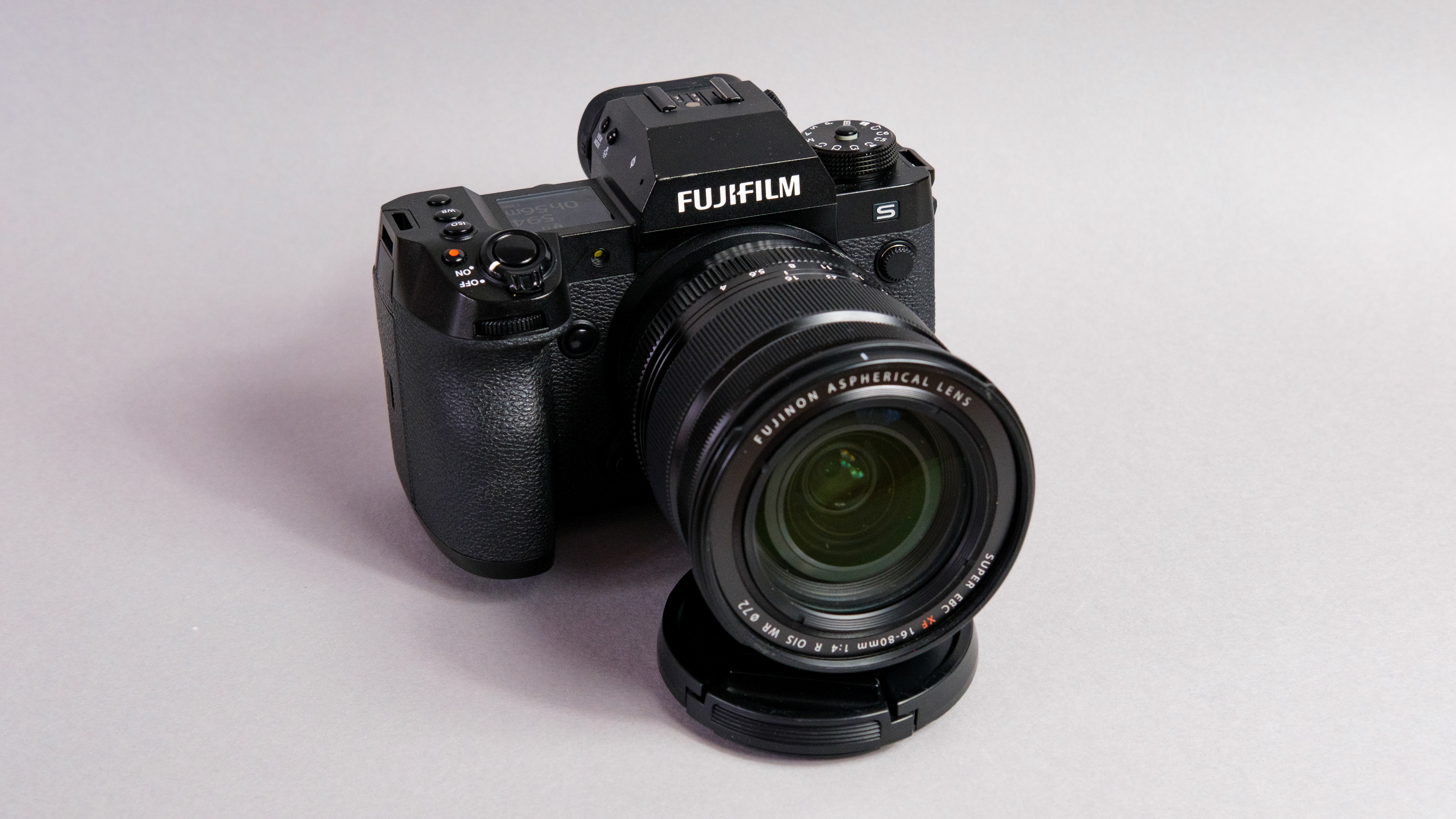
Sensor: 26MP BSI APS-C
Processor: X-Processor 5
Stabilization: 5-axis IBIS
AF system: Hybrid contrast/phase detection AF
Viewfinder: 0.5-inch OLED EVF, 5.76 million dots
Display: 3-inch Vari-Angle touch screen LCD, 1.62 million dots
ISO range: ISO 80 - 51,200
Max video resolution: 6.2K @ 30p
Ports: USB-C, HDMI, 2x 3.5mm (mic/headphones), 2.5mm (remote)
Storage: SD/SDHC/SDXC UHS-II, CFExpress Type-B
Wireless/bluetooth: Wi-Fi & Bluetooth
Max shooting speed: 15fps mechanical; 40fps electronic
Max shutter speed: 1/8,000 mechanical; 1/32,000 electronic
Battery life (CIPA): 720 shots
Size/weight: 5.37 x 3.66 x 3.33 inches; 1 lb 8 ounces
The Fujifilm X-H2S and its sibling, the Fujifilm X-H2, sit at the very top of Fujifilm’s APS-C camera lineup, above the enthusiast-tier Fujifilm X-T5. The X-H2 siblings share many features in common, but are pitched at slightly different users.
The X-H2 prioritizes resolution, with a 40MP image sensor and 8K/30p video recording. The X-H2S tested here instead prioritizes stills speed, featuring a 26MP image sensor but a blistering 40fps shooting rate. Its maximum video resolution is still a respectable 6K/30p.
Both cameras feature Fujifilm’s X-Processor 5, lending them the company’s latest AF algorithms, and both offer a range of features to make life easier for professionals, including top panel settings displays and a CFExpress port.
Is Fuji’s APS-C flagship still one of the best mirrorless cameras in 2024? In short, yes — and it’ll make sense to more people now than ever. To find out more, read on for our full Fujifilm X-H2S review.
Fujifilm X-H2S review: Price & availability
The Fujifilm X-H2S was released in July 2022 and cost $2,499 / £2,499, which is a reasonable fee for a professional body, but would typically put it out of the reach of many enthusiasts. However, in 2024, we’re now seeing prices drop to around the $2,000 / £2,000 mark direct from Fujifilm. That price could make a lot of sense to enthusiasts (particularly wildlife photographers) willing to spend a little more for the extra features, especially if they’re considering a dabble in paid professional work in the future. It also brings it closer to the Panasonic Lumix G9 II ($1,899), a micro four thirds camera also designed for high speed professional work; and undercuts the Canon EOS R6 Mark II — Canon’s full frame semi-professional body ($2,499).
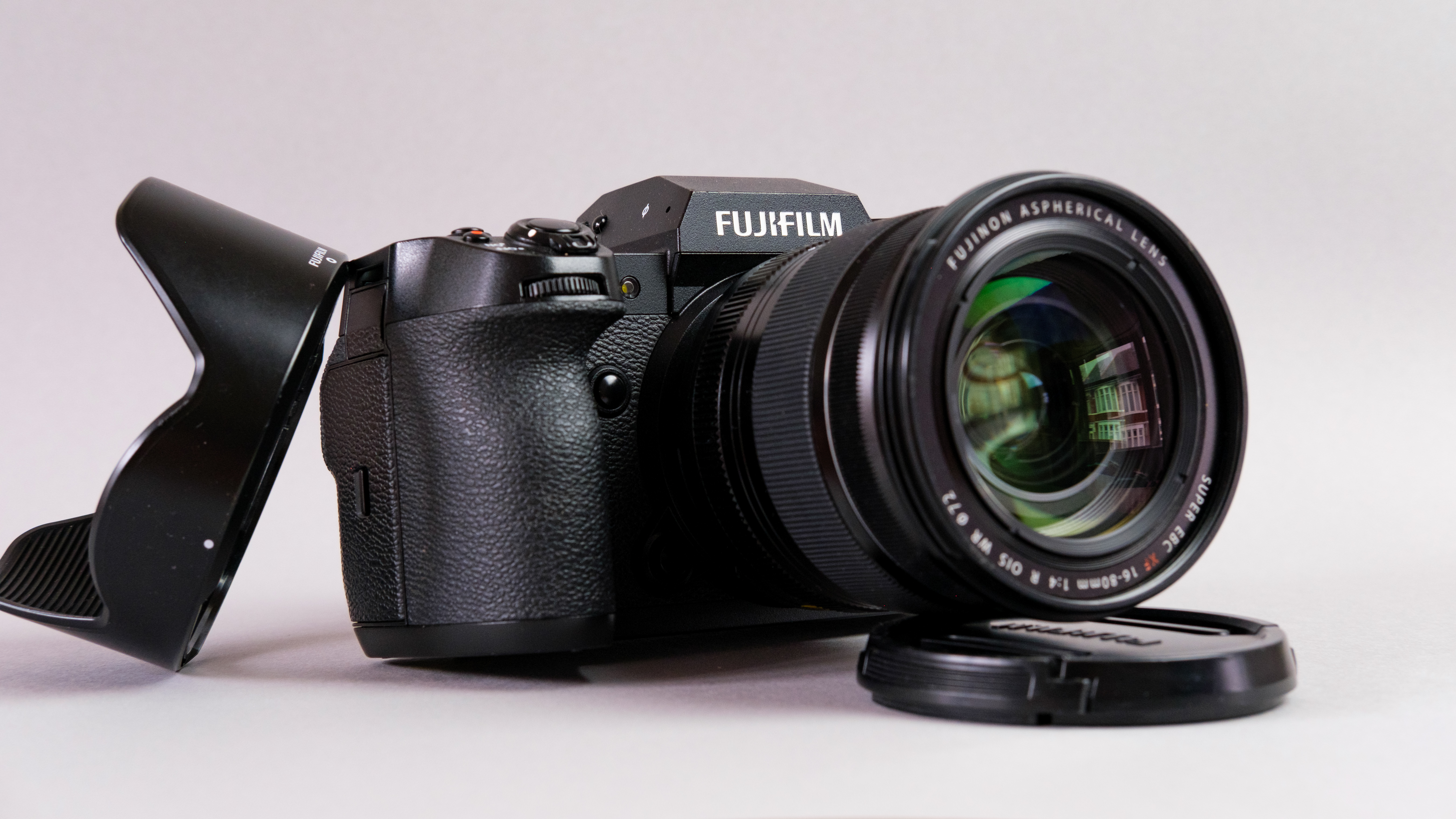
If professional jobs are not on the horizon, or you don’t need the X-H2S’ blistering 40fps shooting rate for wildlife or sports, the Fujifilm X-T5 is probably better suited to most enthusiasts thanks to its 40MP sensor and lower price ($1,699).
Fujifilm X-H2S review: Design & controls
Designed with professionals in mind, the X-H2S prioritizes function over form, evidenced by its chunky front grip, digital top panel display and ergonomically placed control dials. For Fuji’s trademark retro aesthetic, look instead at the X-T5.
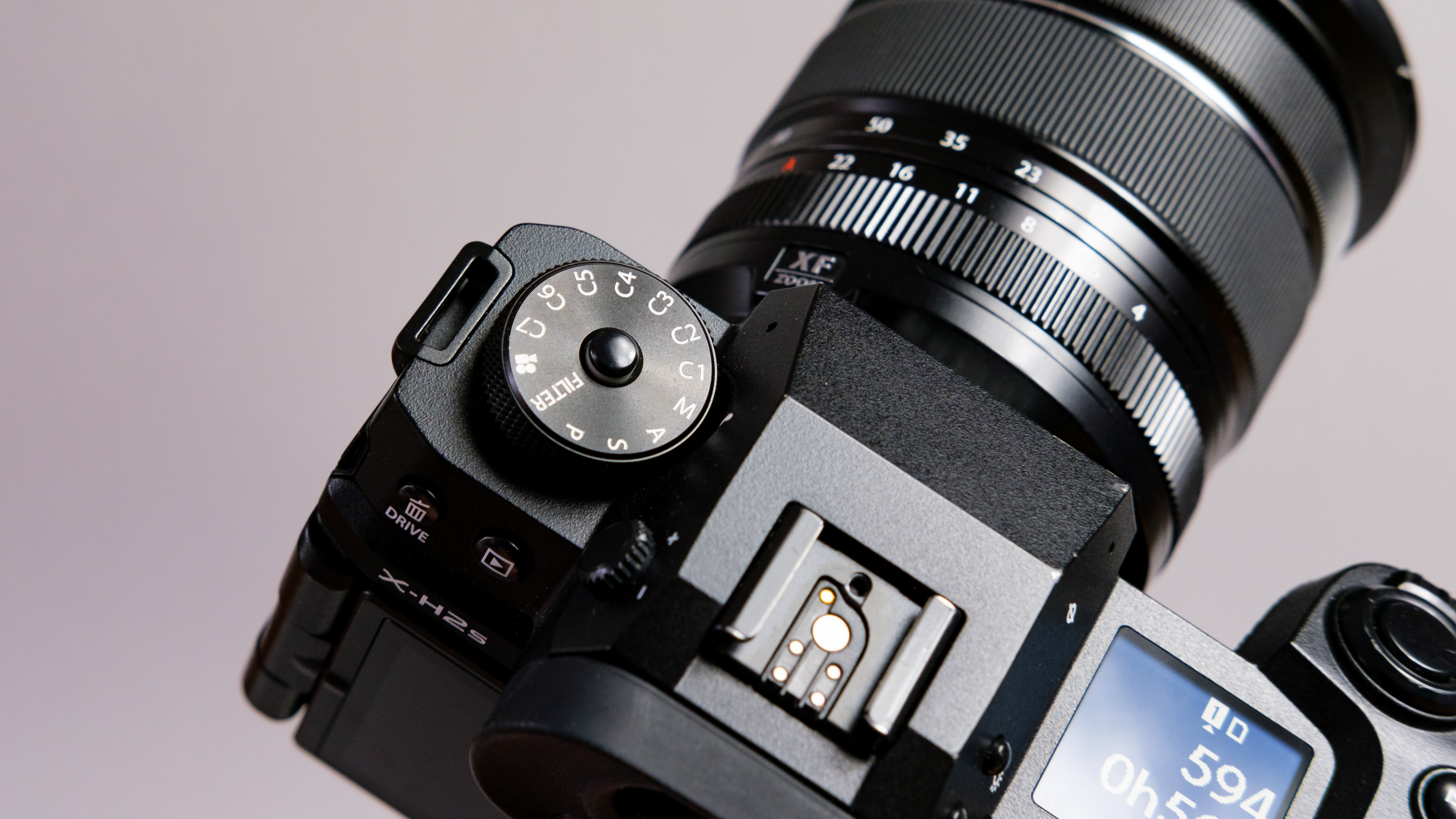
All that function results in a sizable camera, measuring 5.37 x 3.66 x 3.33 inches and weighing a hefty 1 lb 8 ounces. That said, native APS-C lenses are generally much smaller than native full frame lenses, and Fuji in particular makes some fantastic small APS-C primes.
The X-H2S features a vari-angle rear touch screen monitor with a modest 1.62M dot resolution. This is made up for by a super high resolution 5.76M dot EVF. There’s also the top panel display for quickly checking settings — especially useful when looking down on a mounted camera.
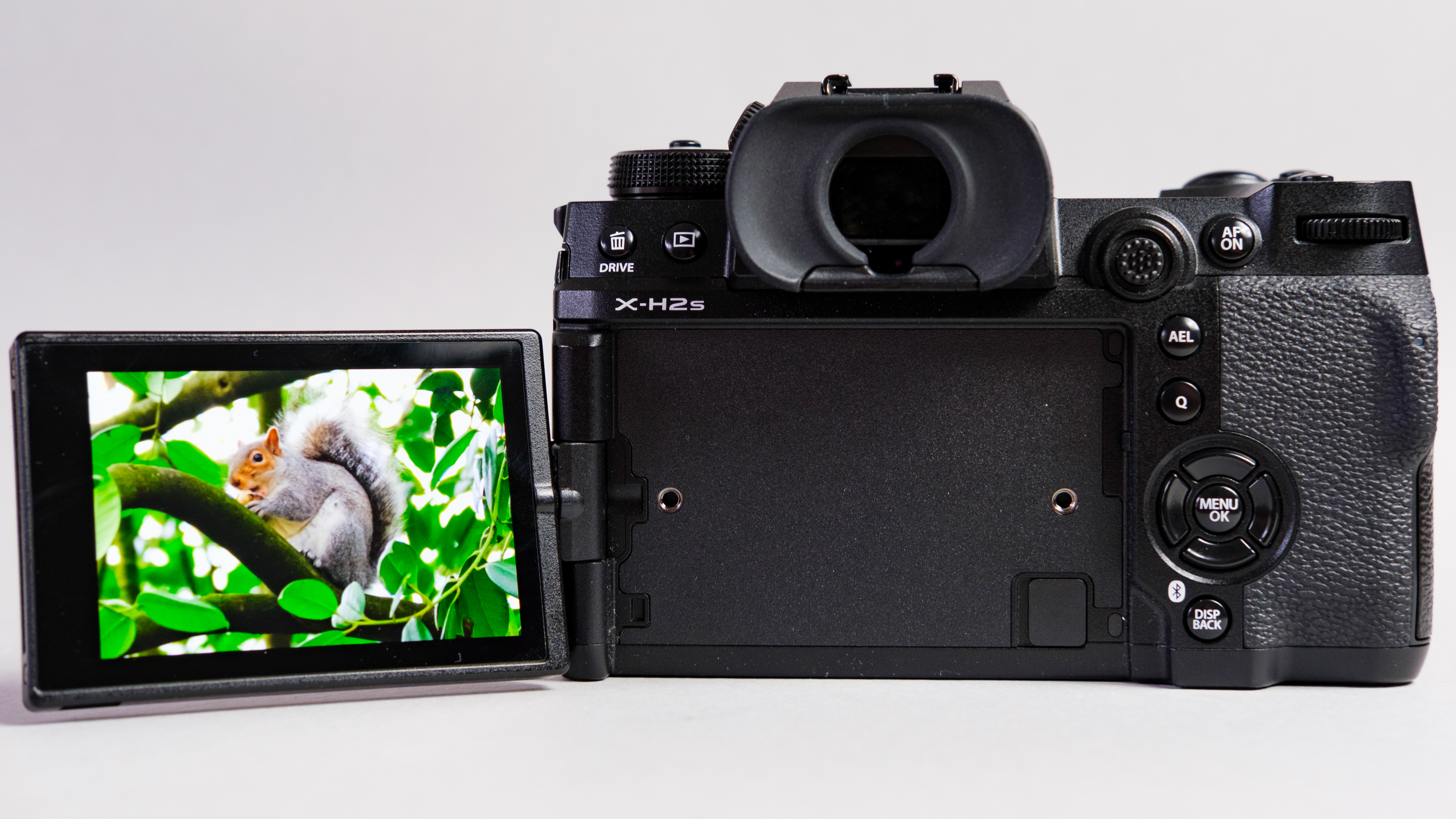
There are USB-C, headphone and microphone ports, plus a full-size HDMI port, giving ample connectivity options. Naturally the X-H2S features dual card slots, although one is a CFExpress Type-B port to support faster write speeds. Slot 2 is a standard UHS-II SD/SDHC/SDXC port.
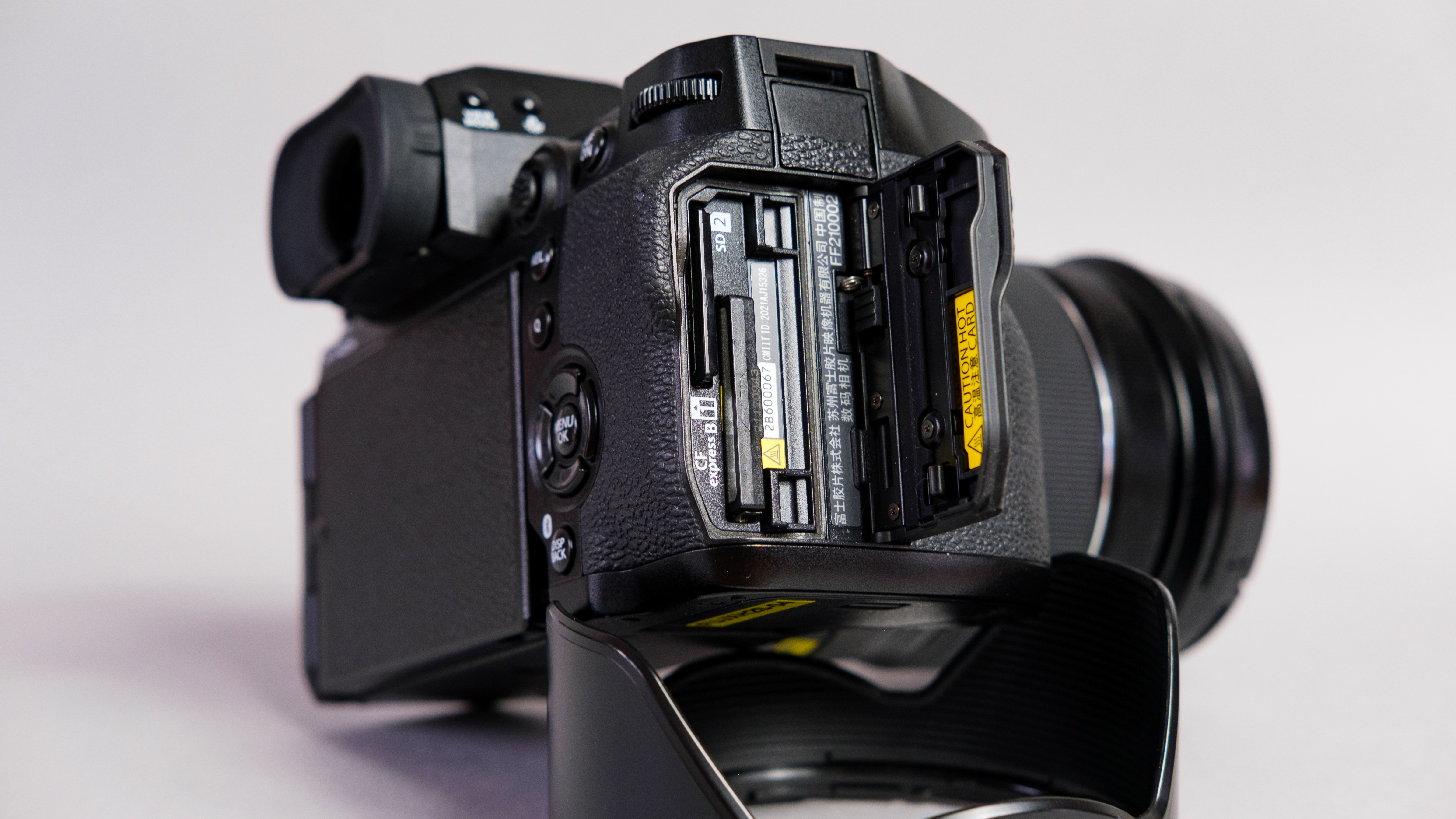
Build quality is outstanding, with not a cheap-feeling material, button, dial or flap in sight. The X-H2S is dust and moisture resistant, too.
Fujifilm X-H2S review: Controls
The X-H2S features a decent array of on-camera controls, and although there are fewer remappable Fn buttons than on rival professional bodies like the Sony A7 IV, the touchscreen features 4 mappable swipe gestures which serve the same purpose.

Most buttons and dials are sensibly placed and easy to reach in action, making this an easy camera to shoot with. The exceptions are an awkwardly-placed Fn button on the top panel, plus the focus joystick, which gets in the way if you shoot with your left eye to the viewfinder and is fiddly for using to change focus area size (you must change focus position before altering size).
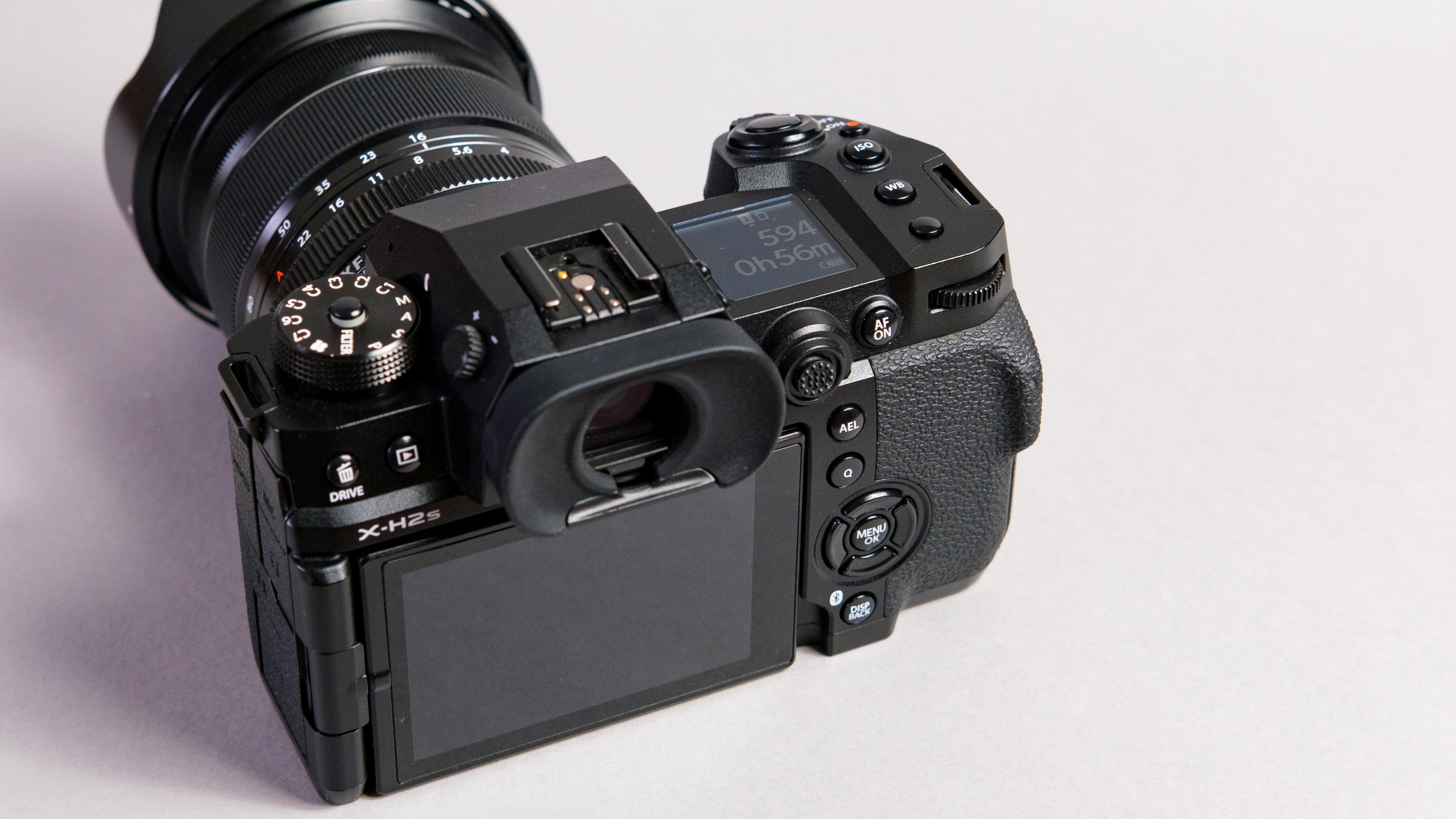
The primary mode dial features no less than 7 customizable memory presets, allowing users to pre-program a wide range of settings for different shooting scenarios.
Fujifilm X-H2S review: Autofocus performance
The Fujifilm X-H2S features the X-Processor 5 — in 2024 still Fuji’s latest and greatest image processor, offering its most advanced autofocusing technology and functioning down to EV-7.0. There are detection modes for human faces and eyes, animals, birds, cars, motorcycles, trains and planes. Human face and eye detection is excellent, reliably detecting and tracking faces and eyes throughout the frame.
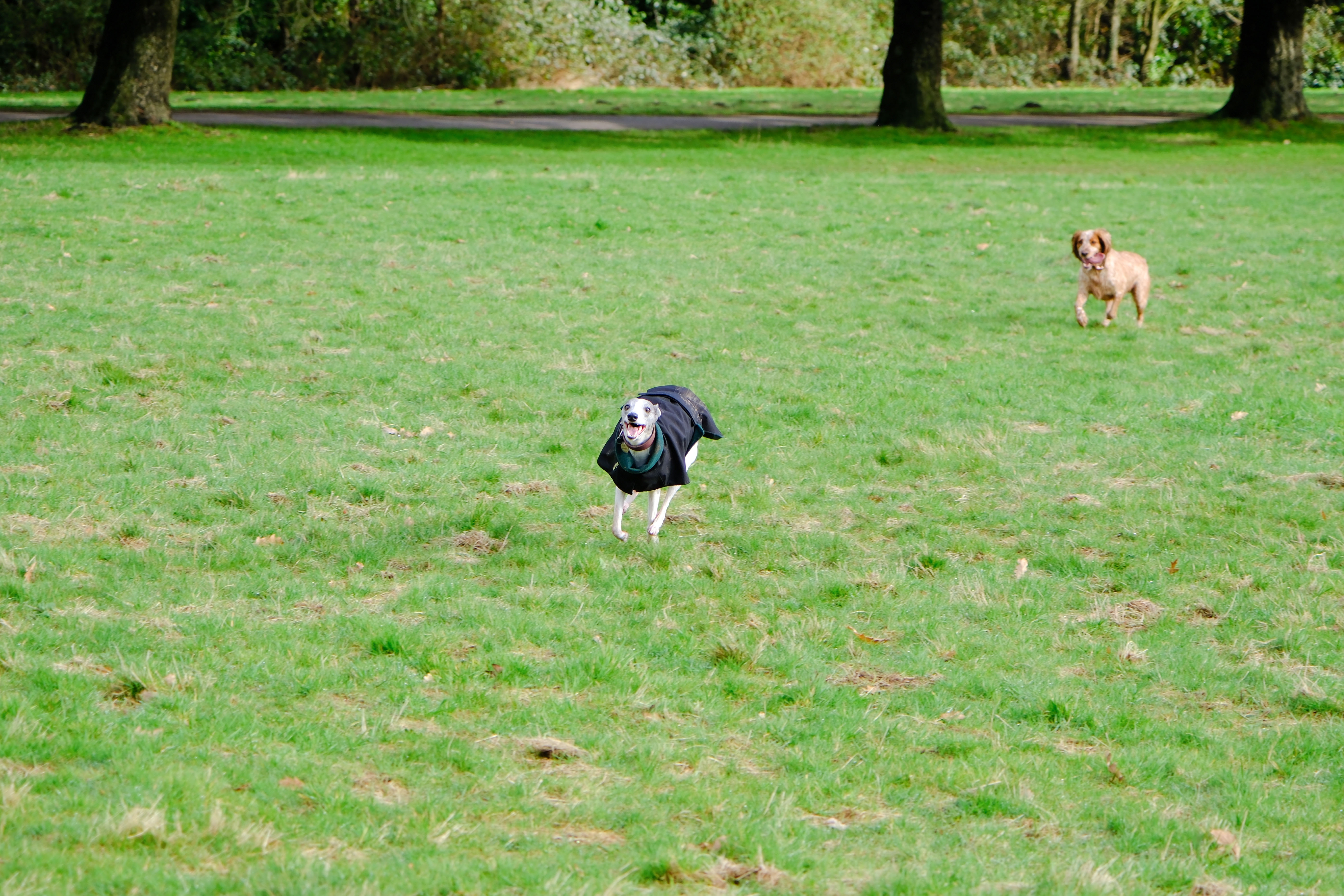
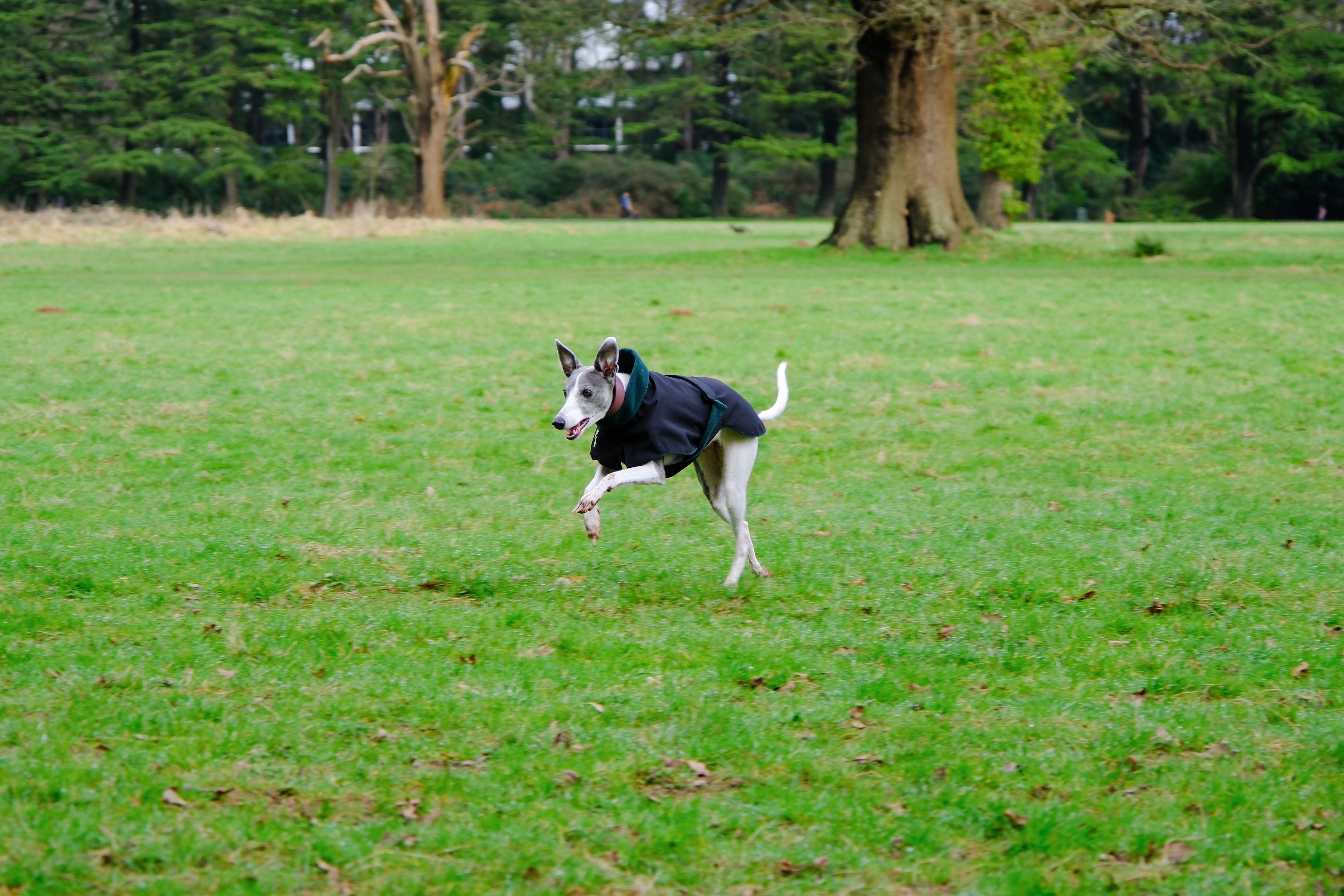
To try out high speed tracking, I tested the X-H2S with an extremely quick whippet, as demonstrated in the gallery above. The X-H2S performed phenomenally, delivering around half of the roughly 400 burst shots in acceptable or sharp focus. This is the best performance I have ever seen from a camera when conducting this test.
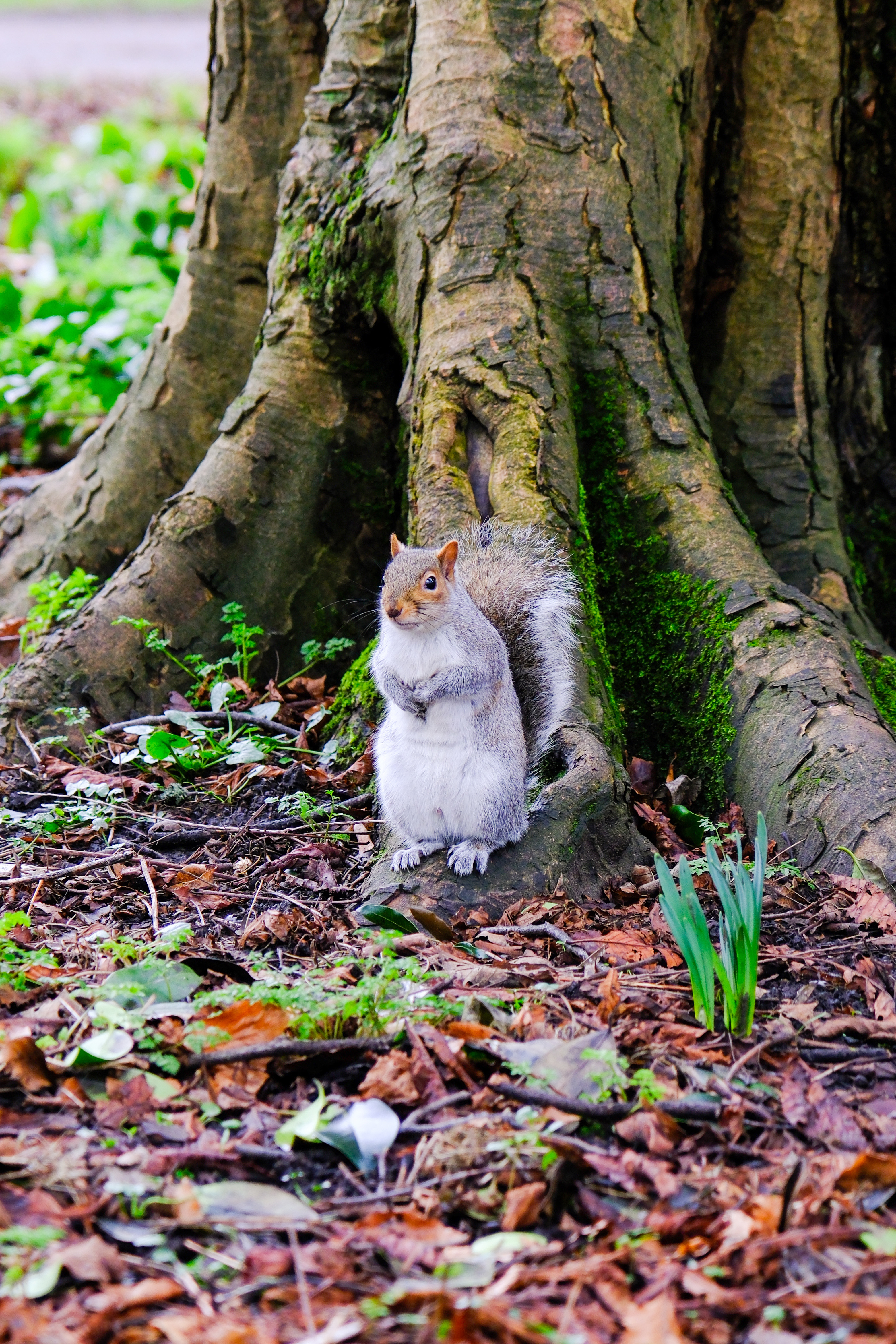
I also tested the X-H2S on smaller wildlife in my local park. When the squirrels stayed still or moved slowly, it performed excellently, detecting their bodies and eyes quickly (even in challenging backlit lighting conditions). It did struggle a little with fast-moving smaller animals though, resulting in a lower hit rate of shots in acceptable focus.
Fujifilm X-H2S review: Image performance
The X-H2S uses Fuji’s 26MP X-Trans CMOS 5 sensor, which produces beautiful images with enough resolution for moderate cropping. Obviously, the 40MP X-H2 allows greater post-crop image quality and will be better for large format printing.
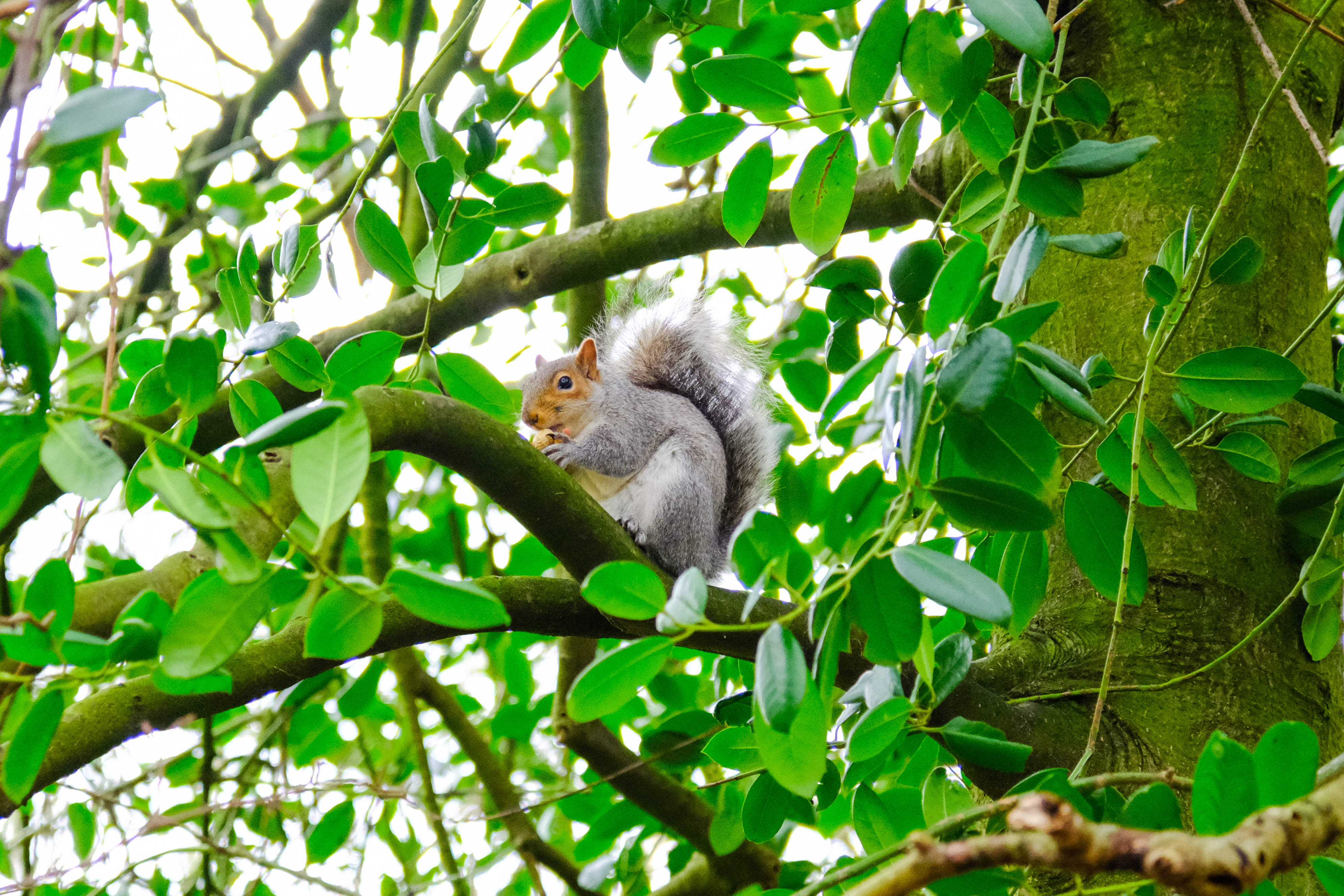
Colors are lovely and natural-feeling in Provia (Standard), although there are a range of Fuji’s film simulation profiles if you feel like getting a little creative in-camera. The images below were shot in Velvia (first), Classic Chrome (second) and Acros (third).
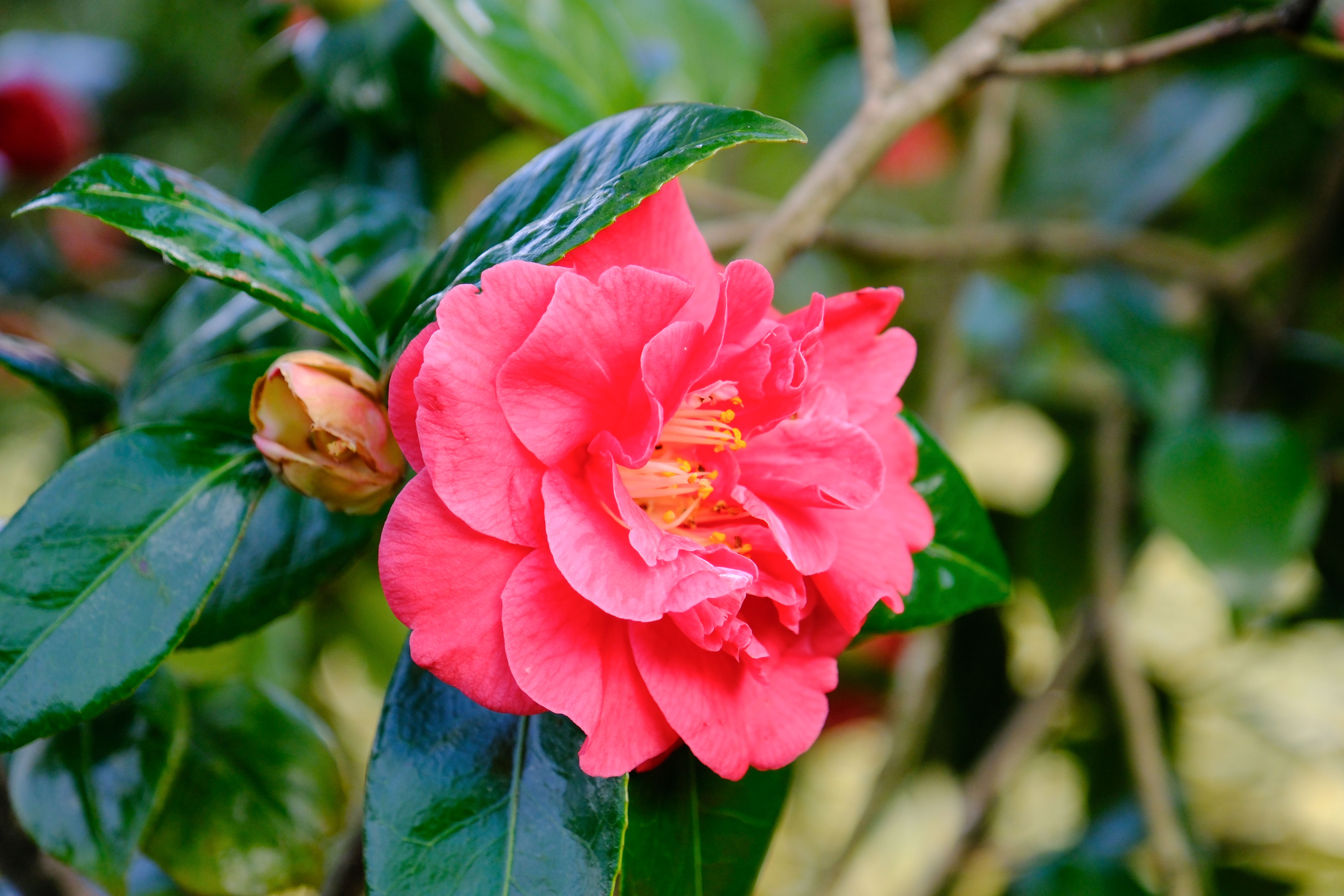


The X-H2S’ headline figure is its drive rate: up to a blistering 40fps using the electronic shutter. At those speeds, buffers fill after a generous 170 compressed RAW or 184 JPEG files. 40fps is a fair distance short of the Lumix G9 II’s 75fps shooting rate, but should be fast enough for most sports and wildlife photographers, and comes without the sacrifice of the smaller MFT sensor.
The Fuji also has the massive benefit of a CFExpress port, allowing for minimal (if any) writing downtime between bursts (providing you remember to tell the camera to stop dual writing to the SD slot). That’s a big win over the G9 II which only features SD slots.
The X-H2S feature’s a 7-stop IBIS system, which performs very well. The first image in the gallery below was shot handheld using a 1-second shutter, with no blurring from camera shake.


The second image in the gallery above is the same shot, with the shadows lifted. As you can see, the camera captured a fairly wide dynamic range. There is a decent amount of detail retained in the darker shadows of the foreground and sky, although the boosted shadows do reveal a fair bit of noise in the darker areas. The noise isn't destructive, but is quite distracting even at standard viewing sizes. This shot was taken at ISO 1,250, so not exactly high sensitivity.
At the other end, the camera has retained bright highlights on the clock face, some of which were slightly clipped but retrievable in post.


The images in the gallery above are the same photo, taken at ISO 12,800. The first is a JPEG export of the original RAW file with only the in-camera color profile applied. Image noise is noticeable in the sky, but it isn’t ruinous and certainly nowhere near as bad as ISO 12,800 on a micro four thirds camera like the G9 II. The second photo is the out of camera JPEG — the camera’s noise suppression has smoothed out the noise well, slightly reducing sharpness but not to a destructive degree. Again, the difference is stark versus ISO 12,800 shots on the Lumix G9 II.
Fujifilm X-H2S review: Video performance
With its faster drive rate and lower maximum video resolution, the X-H2S is slightly more photography-oriented than the X-H2. That said, it’s hardly lacking in video credentials. The X-H2S shoots internal 6K/30p in 4:2:2 10-bit color, including in Apple ProRes, thanks to its CFExpress Type B slot.
The X-H2S shoots 4K/60p, then on up to 120p for high resolution slow motion footage. There’s also the latest Fujifilm FLog 2, which delivers up to 14 stops of dynamic range; ALL-I or LongGOP compression; and a range of bitrates for scaling quality to storage or workflow requirements.
The BSI stacked sensor enables ultra fast readout times to minimize rolling shutter. Naturally, the 7 stops of image stabilization are also great to have when shooting and panning handheld, reducing camera shake.
Fujifilm X-H2S review: Battery life & overheating
The Fujifilm X-H2S features Fuji’s stellar NP-W235 battery. It’s rated at 720 shots in the X-H2S, which isn’t bad at all considering the power-hungry 5.76M dot EVF. You can achieve a full day shooting with this battery, although it’s worth taking a spare for particularly intensive shoots.

I'm skeptical about Fuji's 240-minute continuous recording claim outside a lab.
Fujifilm promises 240 minutes of continuous shooting at 4K/60p (using the external battery grip — effectively giving three batteries in total) from the X-H2S, thanks to a heat dissipating structural design and an internal fan.
In our 4K/60p battery and overheating test, the camera recorded just over 80 minutes of footage from a single battery before dying. With the temperature cutoff and fan both at maximum, it didn’t overheat but was extremely warm to the touch and smelled of hot electronics. In its lower default fan and cutoff modes, the X-H2S overheated after 40 minutes. Neither figure is bad, but I'm skeptical about Fuji's 240-minute continuous recording claim outside a lab.
Fujifilm X-H2S review: Verdict

The Fuji X-H2S is the ultimate APS-C camera. Or rather, it’s one of the two ultimate APS-C cameras — which one you choose depends on your needs. Its sibling, the X-H2, is the ultimate APS-C camera for slower-paced, high resolution footage, thanks to its 40MP sensor and 8K video recording. The X-H2S is instead the ultimate APS-C camera for high speed photography thanks to its blistering 40fps drive, minimal image writing downtime and phenomenal autofocusing.
It’s no weakling when it comes to video either, offering some powerful specs like internal 6K ProRes recording. Plus, the X-H2S comes with the usual benefits of all modern Fuji mirrorless cameras: great looks, fantastic build quality and gorgeous images. Being an APS-C camera, there’s also the added benefit of smaller and cheaper lenses versus full frame sports and wildlife cameras. So, if you have $2,500 and want the best APS-C camera money can buy for fast shooting, there’s no camera I’d recommend more.







